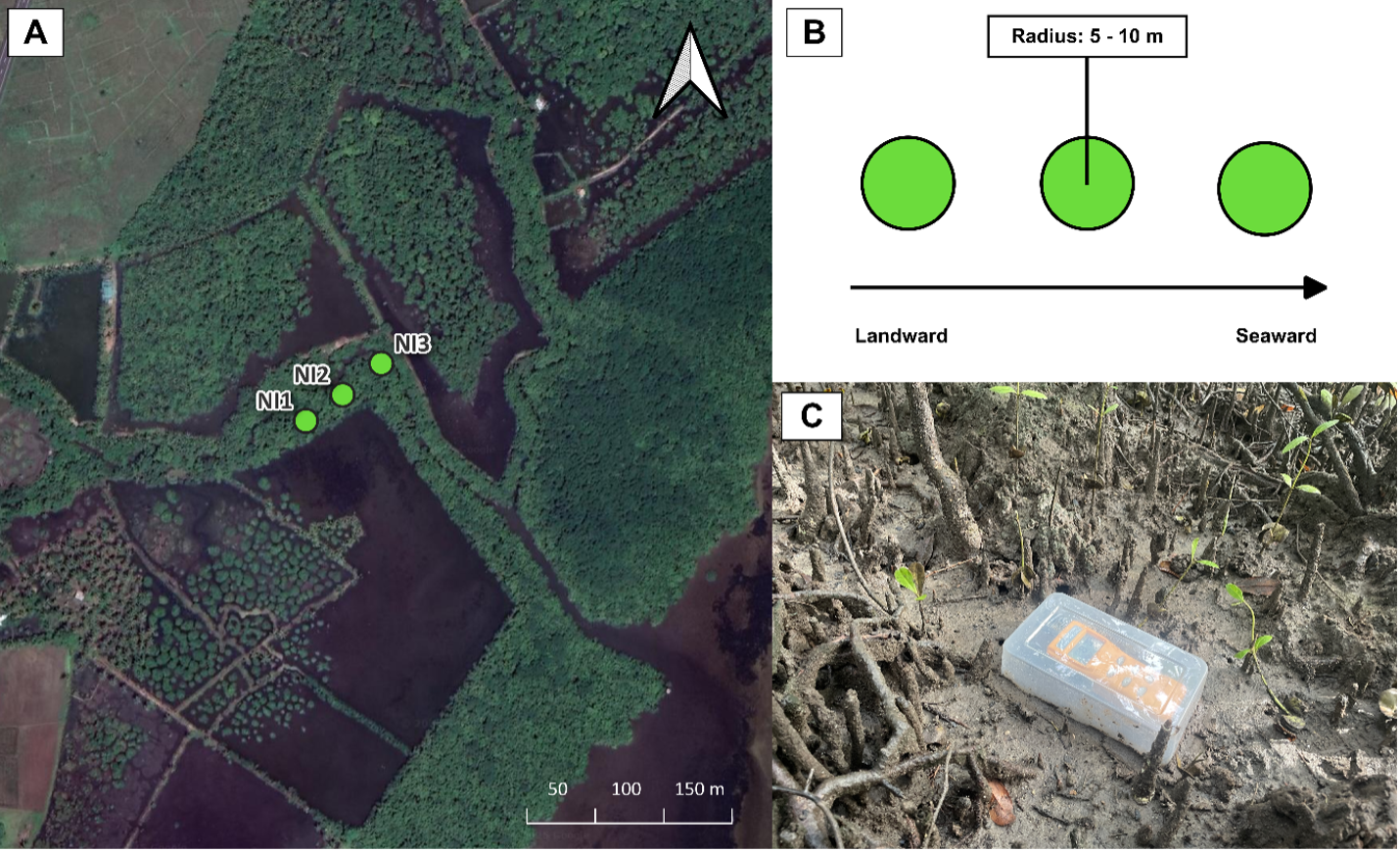VOLUME 18 NUMBER 2 (July to December 2025)

SciEnggJ. 2025 18 (2) 347-355
available online: 30 September 2025
DOI: https://doi.org/10.54645/2025182KYQ-66
*Corresponding author
Email Address: sgsalmo@up.edu.ph
Date received: 05 April 2025
Dates revised: 18 June 2025 and 24 August 2025
Date accepted: 23 September 2025
ARTICLE
Exploring the potential of low-cost portable CO2 meter in the assessment of soil CO2 efflux in Philippine mangroves
Philippines Diliman
Mangroves are critical carbon sinks that play a vital role in the global carbon cycle. However, studies examining soil CO2 emissions in Philippine mangroves remain limited. This study assessed the soil CO2 efflux of mangroves in Prieto Diaz, Sorsogon (northeastern Philippines) across different stand types (as natural, recolonized, and restored stands) and examined other ecological parameters influencing it. Using a handheld CO2 meter in a modified static closed chamber, we observed the highest mean CO2 efflux in recolonized sites (19.00 ± 4.59 MgCO2 ha-1 yr-1), followed by the restored (16.46 ± 4.90 MgCO2 ha-1 yr-1) and natural sites (15.30 ± 3.10 MgCO2 ha-1 yr-1). However, we found no significant differences across stand types. Additionally, we found that soil CO2 efflux was positively correlated with canopy cover (r = 0.52) and negatively correlated with faunal burrow density (r ‒0.40) and width (r = ‒0.36). Compared to other studies, our mean CO2 efflux values were in the lower range, probably due to the lower sensitivity of the handheld CO2 meter (an acknowledged limitation of this study). Nonetheless, our findings highlight the potential of the low-cost handheld CO2 meter for community-based monitoring of mangroves, particularly in assessing the contribution of managed mangroves in the reduction of CO2 emission.
© 2025 SciEnggJ
Philippine-American Academy of Science and Engineering